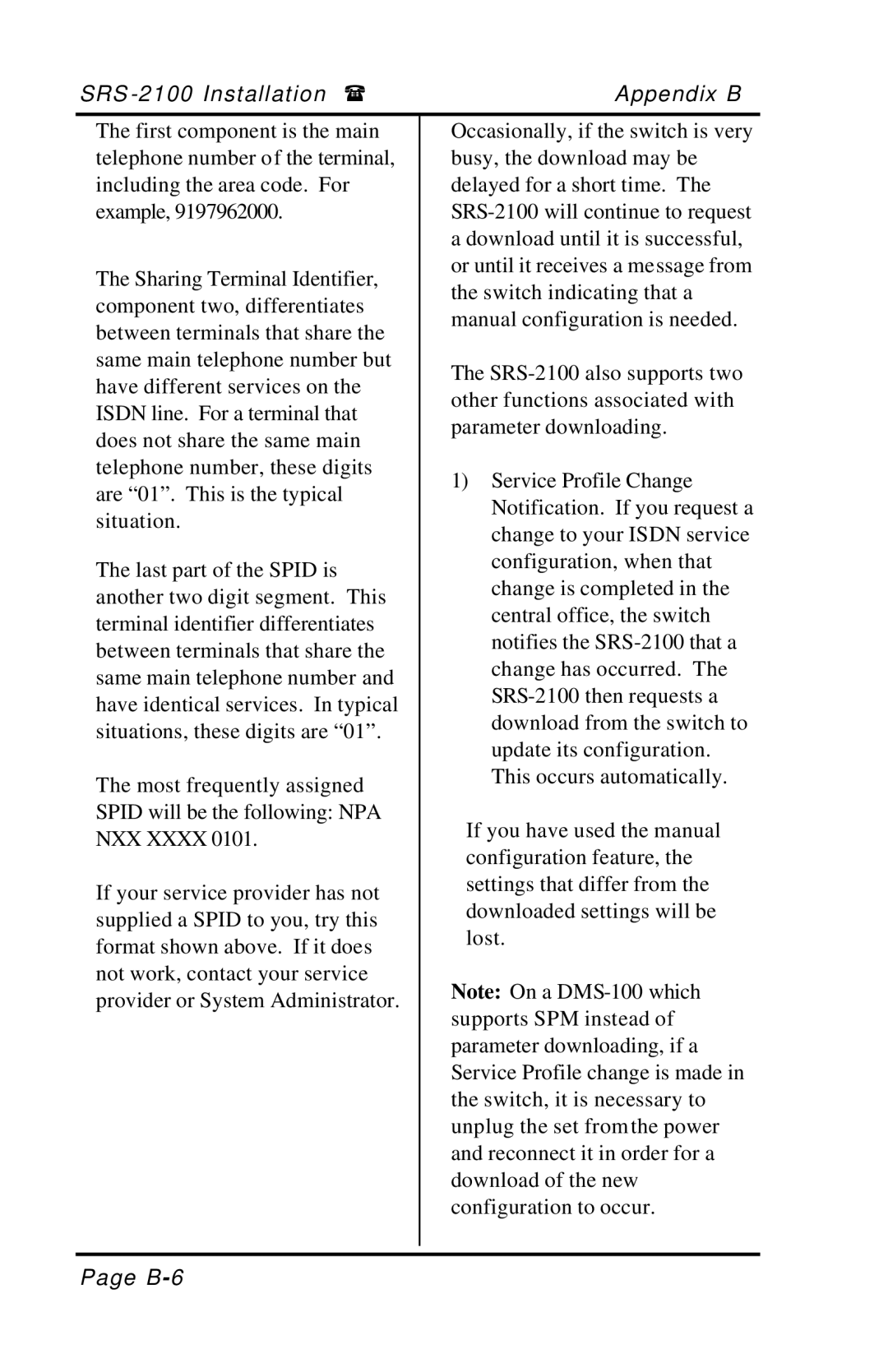
SRS | Appendix B |
The first component is the main telephone number of the terminal, including the area code. For example, 9197962000.
The Sharing Terminal Identifier, component two, differentiates between terminals that share the same main telephone number but have different services on the ISDN line. For a terminal that does not share the same main telephone number, these digits are “01”. This is the typical situation.
The last part of the SPID is another two digit segment. This terminal identifier differentiates between terminals that share the same main telephone number and have identical services. In typical situations, these digits are “01”.
The most frequently assigned SPID will be the following: NPA NXX XXXX 0101.
If your service provider has not supplied a SPID to you, try this format shown above. If it does not work, contact your service provider or System Administrator.
Occasionally, if the switch is very busy, the download may be delayed for a short time. The
The
1)Service Profile Change Notification. If you request a change to your ISDN service configuration, when that change is completed in the central office, the switch notifies the
If you have used the manual configuration feature, the settings that differ from the downloaded settings will be lost.
Note: On a
